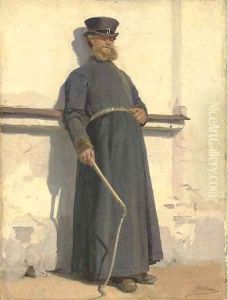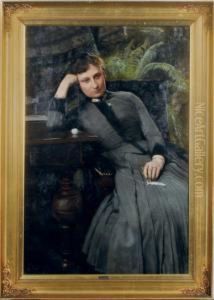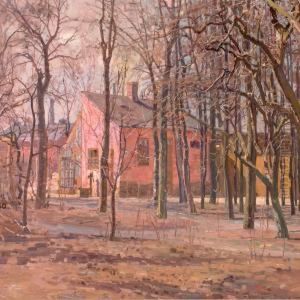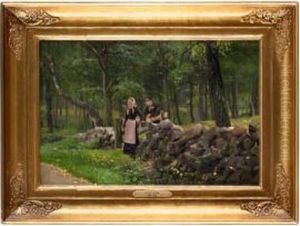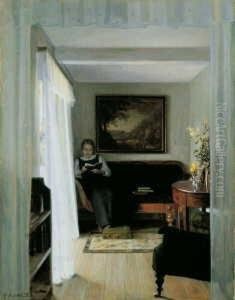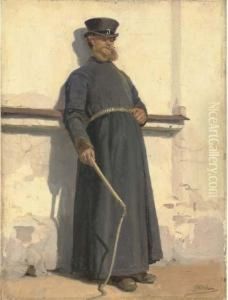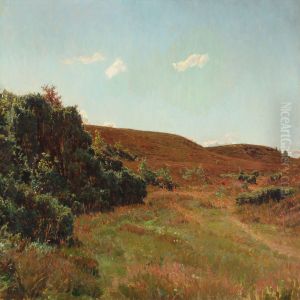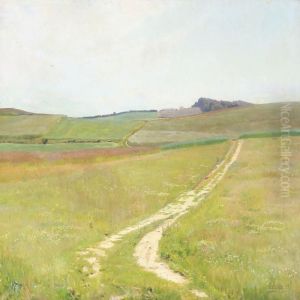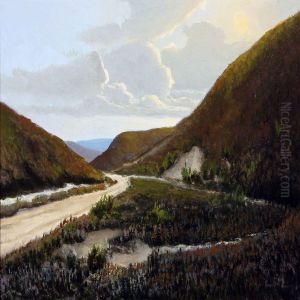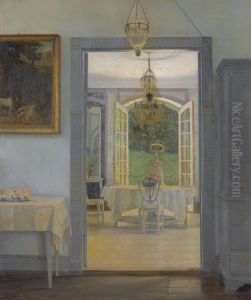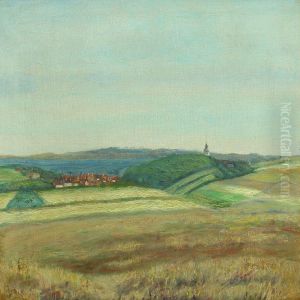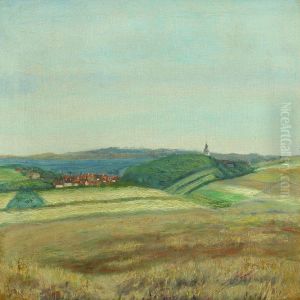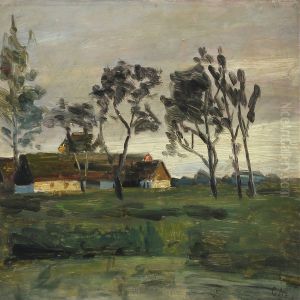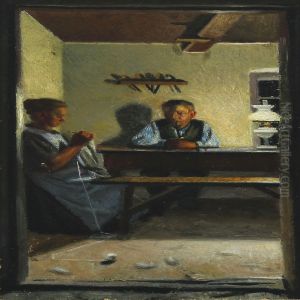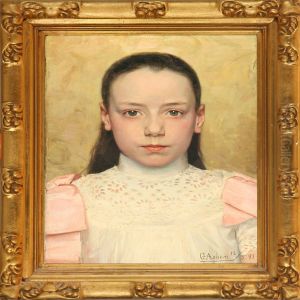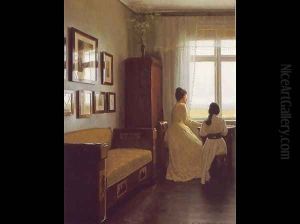Georg Nicolaj Achen Paintings
Georg Nicolaj Achen, often known simply as Georg Achen, was a Danish painter born on September 26, 1860, in Frederikssund, Denmark. He is recognized for his contributions to the Symbolist movement in Denmark and for his portraits, genre works, and landscape paintings. Achen showed a talent for art from a young age and pursued his passion by studying at the Royal Danish Academy of Fine Arts in Copenhagen from 1877 to 1882.
During his career, Achen was influenced by various art movements, but he is particularly associated with Symbolism, a movement that sought to express the mystical, emotional, and spiritual through art. Achen's works often featured symbolic and poetic content, conveying moods and narratives beyond the immediate visual representation.
In the 1890s, Achen became a part of a group of Danish artists known as 'The Symbolist Circle,' which also included artists like J.F. Willumsen and Johannes Holbek. This group was interested in exploring new ideas and expressions in art, diverging from the more traditional academic style that dominated Danish art at the time.
Achen's paintings are characterized by a use of light and shadow to create mood, as well as a subdued, often melancholic palette. One of his most recognized works is 'The Sick Girl' (1882), depicting a young girl on her deathbed, which reflects the Symbolist preoccupation with themes of life, death, and the transcendent.
Despite his contributions to Danish art, Achen was not widely recognized internationally during his lifetime. However, he found some success at home and was awarded the Eckersberg Medal in 1904, one of Denmark's highest honors for artists.
Georg Achen's life was relatively short; he died on February 28, 1912, in Hellerup, Denmark. His work continues to be appreciated for its emotional depth and its role in the development of Symbolism in Denmark. Today, his paintings can be found in various museums, including the Statens Museum for Kunst (The National Gallery of Denmark) in Copenhagen.
